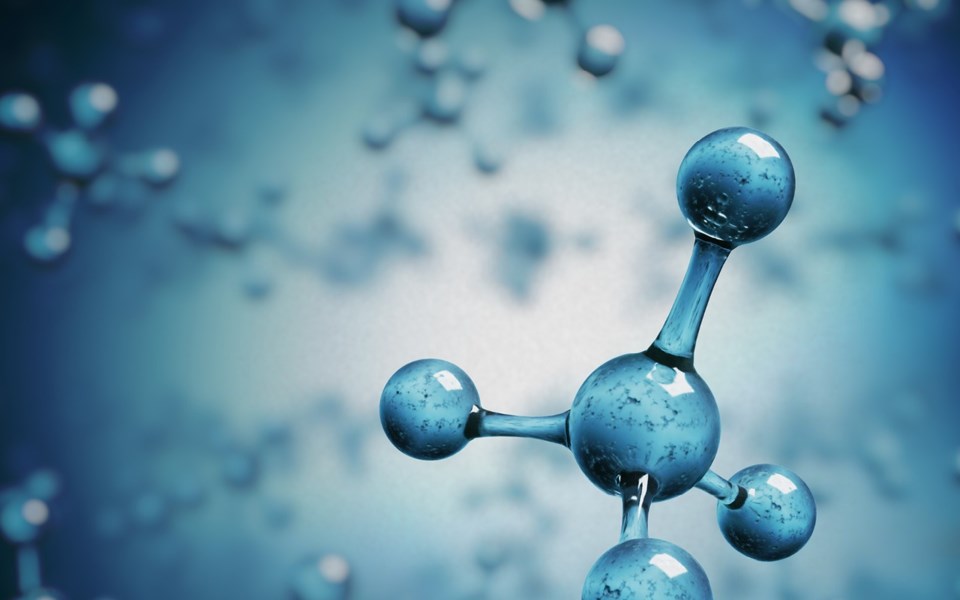We're hearing a lot more about methane these days. There's a reason for that.
As a Greenhouse Gas (GHG) that exacerbates climate warming, methane (CH4) has been shown to be some 25 times more powerful than carbon dioxide (CO2). Of course, there's a lot more carbon dioxide around so we're far more familiar with that molecule.
We know roughly how much of it there is at any given time, how and where it is generated, and how it cycles in the atmosphere, lithosphere (earth's crust), and biosphere (land, water and living things). We track its atmospheric levels both currently (via direct measurement) and historically (through bubbles trapped in the ice of glaciers) and can anticipate most of the phenomena associated with its overabundance.
Methane, on the other hand, has proven a master of disguise and subterfuge: it's universally but often surreptitiously released from the earth with fossil fuel extraction; it's produced in vast amounts by ruminant livestock; and it's being rapidly released from frozen storage in organic matter by the circumpolar thawing of permafrost (a de facto positive feedback loop in the warming cycle). We've finally started to add these sources up and realized that methane might be a larger problem than we thought, hence its newsworthiness.
A couple of weeks ago I fingered methane as a "good news" environmental story because our federal government, as part of its broader climate change strategy, had just announced a laudable policy aimed at domestic energy industries, setting a 2025 target of reducing methane emissions by 40 to 45 per cent below 2012 levels. Unfortunately, on the heels of this comes news from scientists that methane emissions from lakes in the northern hemisphere could almost double over the next 50 years because of a novel newly discovered "feedback loop."
Guess who has the most lakes in the world by several orders of magnitude? Exactly. Here's how it works:
To begin, the world's oceans contribute only about one per cent of annual global methane emissions, while freshwater sources contribute up to 16 per cent. This occurs because of the type of organic material that goes into lake sediments, and the methanogenic (methane-producing) bacteria that break it down. Detritus from conifer and deciduous forests don't produce much methane because of phenols they contain that help inhibit its formation, but detritus from dead aquatic plants like cattails produce huge amounts. In experiments, there was a 400 per cent increase in methanogenesis from lake sediments composed primarily of cattails and other emergent vegetation—like highly invasive Phragmites, the European common reed—versus coniferous or deciduous forest debris. This is bad enough on its own, but climate change is causing a major expansion of the proportion of cattails and other macrophytes around lake edges, as well as greatly expanding the ranges of these plants, which are moving ever northward into the lake country of the Canadian Shield, which stretches from Quebec to Saskatchewan. Climate change caused by greenhouse gasses like methane leading to expansion of plants whose decomposition releases more methane comprises yet another crazy feedback loop for climate warming.
The scientists' climate calculations show that the number of lakes in Canada colonized by cattails could actually double between 2041 and 2070, and that this could in turn would elevate methane production by at least 73 per cent during the active growing season each year. And since any place that cattails can colonize can also play host to invasive Phragmites—which is moving northward even faster and tends to have a much greater biomass—those numbers could be even higher.
Dr. Sapna Sharma, an expert at Toronto's York University in the climate-change impact to lakes, told BBC News. "Methane production is currently underestimated in global climate models. This study was able to elucidate a mechanism by which lakes may produce even more methane that previously thought. Uncovering another potential source of methane production from boreal lakes is useful to further understanding global carbon cycles and ultimately improve climate projections."
It may be useful, but it's also damn scary. With the U.S. now doubling down on methane release from increased coal, gas, oil and livestock production, Obama's pledge to Trudeau to set similar reduction targets fades in a distant rear-view mirror of the Trump deregulation bandwagon. That makes Canada's new methane-reduction targets even more critical, and our country a lonely warrior on the North American methane front.
Leslie Anthony is a science/environment writer and author who holds a doctorate in connecting the dots.




